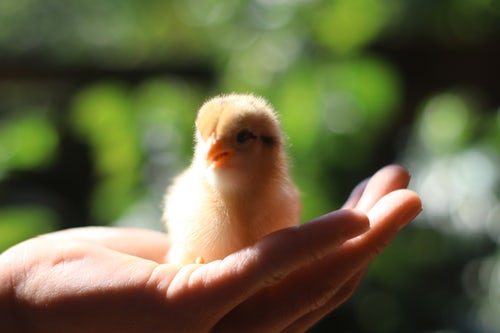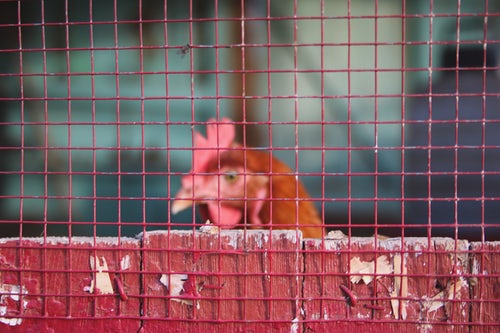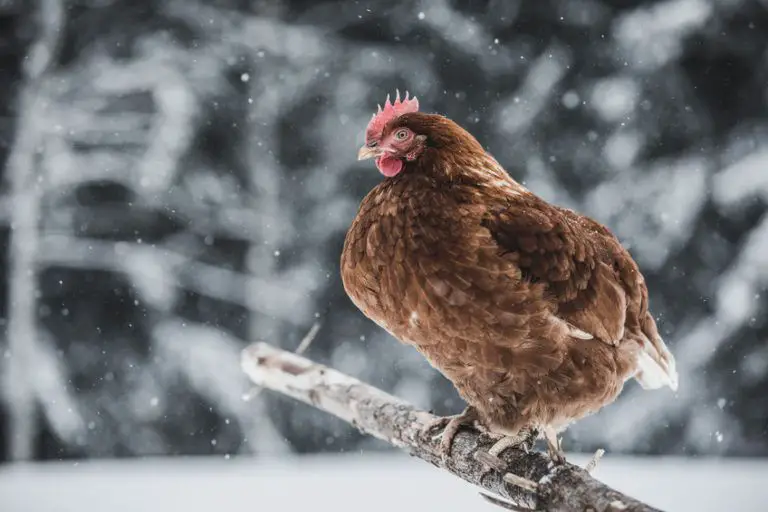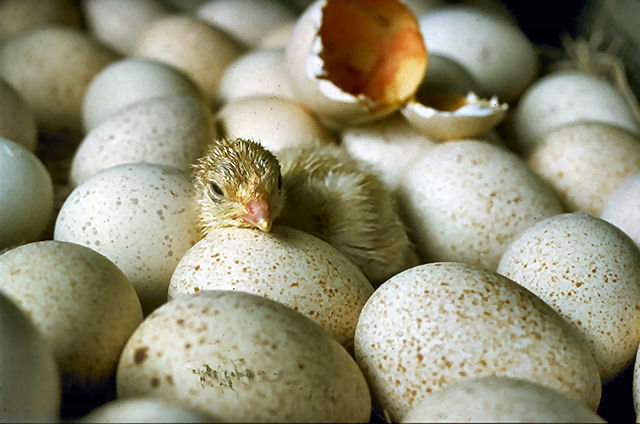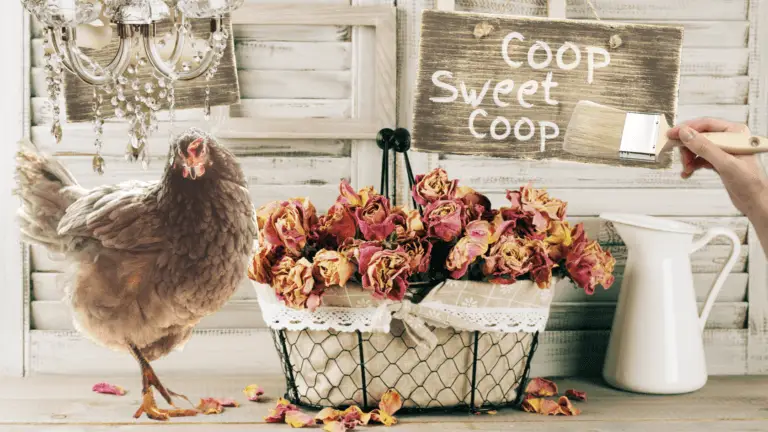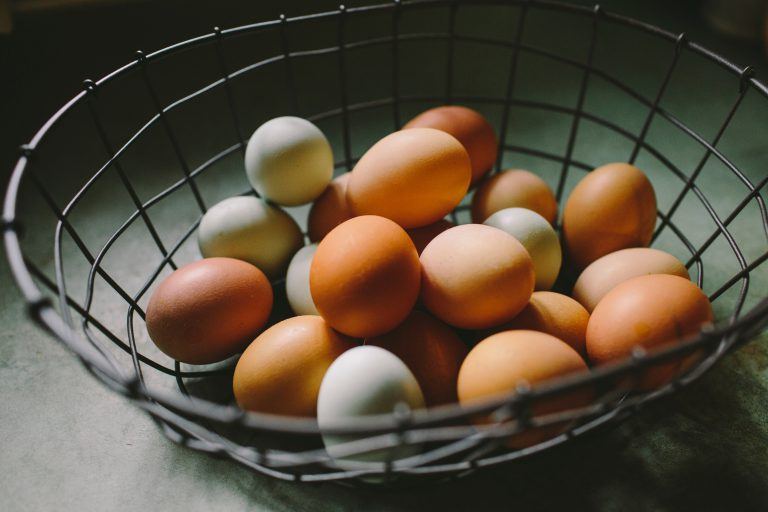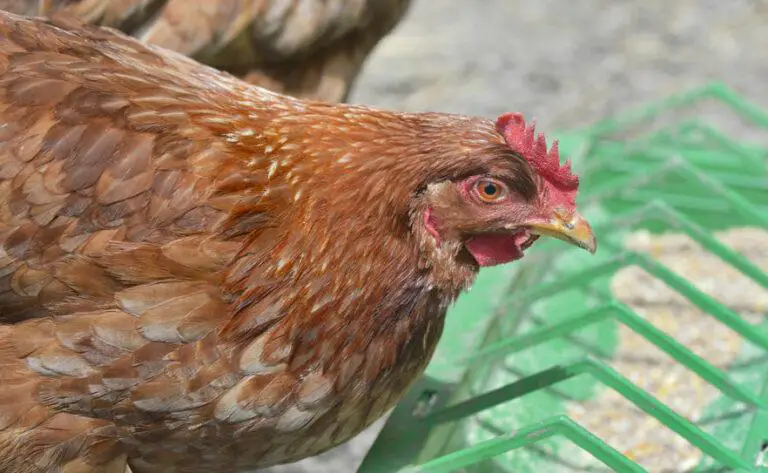New and DIY Chick Feeders – Our Top Picks And Why
If you are getting baby chicks, congratulations! They’re a lot of fun to raise and not overly difficult if you have the right accessories. That’s where chick feeders come in!
In this article we will explore some of the best options on the market, both new and DIY, giving you a better understanding of what types of feeders are available and which ones work best for your brood. We list our preferred feeder and why we like it.
Read on if you want to learn more about selecting the ideal chick feeder for your coop!
Article Outline
- What Are Chick Feeders Made of?
- How Do Chick Feeders Work?
- What To Look For In A Chick Feeder
- How Many Chicks Per Feeder?
- Where To Buy A Chick Feeder
- Our List Of Chick Feeders
- Our Top Choice
- Build Your Own No-Mess Chicken Feeder
- DIY Chick Feeders
- When To Transition From Chick Feeder to (Adult) Chicken Feeder
- What Is The Best Type of Chick Feed To Use In Your Feeder?
- Conclusion
What Are Chick Feeders Made of?
There are several types of feeders made of various materials, which we’ve outlined below.
Plastic
The vast majority of baby chick feeders are made of plastic. They will hold up just fine unless dropped or handled roughly, which can lead to cracking and the ultimate demise of the feeder. If the feeder is kept out of the sun, the plastic will not weaken over time.
Metal
Metal feeders are awesome in that they will hold up much better over time. They may cost a bit more, but you know you’ll be getting a durable feeder which will last a long time.
How Do Chick Feeders Work?
Chick feeders all look and function similarly, and all are gravity fed feeders, meaning there are no automated mechanisms being used.
For gravity fed feeders, just pour the feed in the feeder. As the chicks eat from the trough, the remaining feed in the holding container settles into the trough until it’s gone. Then you’ll need to add more feed.
What To Look For In A Chick Feeder
There are a few things to keep in mind when looking for a quality feeder. We discuss them next, and they are important tips to keep in mind for the health of your chicks, and for your own sanity as a chick owner!
Does It Keep Chicks Out Of The Feeder?
One of the biggest challenges with chicks is keeping them out of the feeders and preventing them from kicking and scratching bedding into the feed. It’s a constant battle! See the photo below…if you’ve raised chicks before, you’ve likely seen this.
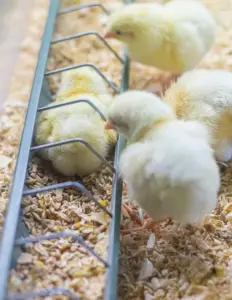
Not only is it irritating to see poop or bedding in the feed, it’s also potentially harmful to your flock if they ingest feces.
Many of the chick feeder options available out there are not no-mess feeders, which is unfortunate. Thankfully, there are a few tips to help prevent these annoying issues.
- Elevate it – This is the best way to keep your flock of littles out of the feed.
- Place a spacer under the feeder to keep it about an inch above the bedding. We have used a couple 2×4 boards laying flat on top the bedding which has worked well.
- Hang the feeder with rope, tied to a fixed object above the brooder (i.e. tied off onto the coop framing, off the rafters near the top of coop, etc.)
- Place the feeder on a tray – This is another simple way to keep your brood from kicking too much bedding into the feeder. Just don’t pick a nice tray since it will be pooped on on a regular basis!
- Buy a no-mess feeder – The feeder which we found to be truly no-mess is the Chick2Chicken feeder. It also keeps mice and rats out! We have the link below, or you can check it out here.
How Many Chicks Per Feeder?
As a general rule, it’s suggested one feeder for every 25 chicks.
Having said that, if you have more feeders (or a feeder with a large capacity), you won’t have to fill it as often!
This is more of a preference and simply helps to save a bit of time and work, especially if you have a lot of chicks, like 20 or more.
They may be small but they have voracious appetites! If you are keeping your flock small, one feeder will be ample.
Where To Buy A Chick Feeder
Obviously, buying a chick feeder online is a popular option and there are many styles to choose from.
But if you want to support your local farm store, head over there to see what they have as well. The advantage of the latter option is being able to see the feeder before buying it.
Our List Of Chick Feeders
[azonpress_tables id=”1″]
Our Top Choice
We like the Chick2Chicken feeder the best. It can hold a lot of feed, the chicks can’t soil it easily (if at all), and it’s unlikely they can kick any bedding in it.
It’s design allows it to be easily hung off the ground if desired. Or you can simply add a spacer under it to keep it slightly elevated.
It also keeps mice and rats out, which many of the other feeders can’t do.
The Chick2Chicken can also be used for adult chickens, which eliminates the need for another feeder when they grow to be full sized chickens! Simply keep raising the feeder incrementally as your flock grows so the feeder hole height is roughly even with the middle of their backs (as a rough guide).
Build Your Own No-Mess Chicken Feeder
There are many variations of the Chick2Chicken feeder that allow you to build your own feeder which can save some money. It’ll require you to use a drill and purchase the port holes.
Then get a 5 gallon bucket, large Tupperware container, or similar and install the port holes from the kit.
DIY Chick Feeders
If you’re hoping to save some money, you can always build your own chick feeder! Yeah it may take a bit of extra work to gather supplies but there are many DIY feeders out there that work well (and won’t cost much either).
DIY Cardboard Chick Feeder
Yep you can make a feeder from a cardboard box. Who knew! Although a feeder like this may not stand the test of time, it just takes an old cardboard box and your time to make a new one. Below is a video of how it’s done.
Plastic Bottle Chick Feeder
There are also a few variations of the plastic bottle chick feeders too. A great tutorial on how to build one can be found here.

When To Transition From Chick Feeder to (Adult) Chicken Feeder
Unless you use the Chick2Chicken feeder, you’ll have to transition from chick feeder to chicken feeder. We have raised many batches of chicks, and have always used our chick feeders until they were around 8 weeks of age, or until large enough to eat out of our (adult) chicken feeders. This has always worked very well.
If you notice the chicks seem to be straining to reach the feed in the adult sized feeder, just bring the chick feeder back in for another week or two.
What Is The Best Type of Chick Feed To Use In Your Feeder?
Now that you’ve found the perfect feeder, it’s time to fill it! It’s a good idea to chat with the local farm store folks on what types of feed they have and either purchase it there or online.
Feed that is specially formulated for chicks is the the best kind. It provides the necessary ingredients that are perfect for your little chooks at this early stage of life.
It is often more expensive than (adult) chicken feed, but don’t try to save a few bucks by simply getting the adult feed for your chicks! The feed companies have spent a lot of time researching what’s best for each stage of a chicken’s life, so it’s best to stay with their recommended guidelines.
Feed comes in mash, crumbles, and pelleted form. We have fed mash to ours in the past thinking it was more palatable for them, but quickly realized it’s simply ground too fine for them and can cause respiratory issues for them. Not only that, they waste a lot more feed than if they are fed crumbles.
Crumbled feed is the perfect form to feed your chicks. It’s small enough to eat, but large enough they don’t kick it around as easily, leading to far less waste.
Avoid feeding pelleted feed to your chicks. Wait until they are around 16 weeks old. Pelleted feed is the best for creating less waste, but can choke chicks/chickens younger that 16 weeks old.
More on chick and chicken feed can be found in this article.
Conclusion
We hope you’ve gotten a few helpful nuggets of information in this article and are ready to get your next chick feeder.
Although we like the “no-spill” feeders the best, any of the feeders listed in the article will work great. It will simply depend on your budget and personal preferences.
If you’ve tried any of the feeders above or have another feeder style not covered here, please leave us a comment below. We don’t pretend to have all the answers and love learning from our readers.
Happy Chickening everyone!

